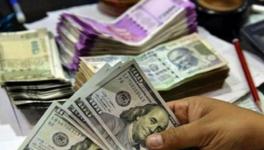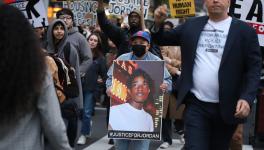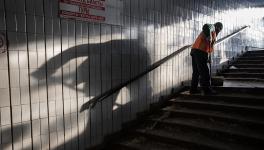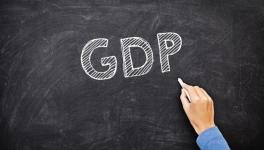The Second-Largest Bank Failure in US History Reveals Double Standard
Many expressed outrage after the US government announced that it would pay out all Silicon Valley Bank depositors in full, a pricetag of over USD$100 billion, especially to venture capitalists, while working people remain in dire straits. (Photo: Tony Webster)
On March 10, the Silicon Valley Bank collapsed in the second-largest bank failure in US history, topped only by the 2008 recession-era failure of Washington Mutual. SVB, which was founded in 1983 and was the go-to bank for tech startups and other venture capitalists, was the sixteenth-largest US bank according to assets.
The bank failure has sent the US economy reeling, with many working people concerned about the impact this could have on their paychecks, personal savings, and whether or not a 2008-like crisis could be provoked.
US authorities have attempted to employ a crisis control strategy, with US President Biden addressing the nation in televised remarks on March 13, saying, “every American should feel confident that their deposits will be there if and when they need them.”
The SVB failure was precipitated by the Federal Reserve hiking interest rates which devalued government bonds, which SVB had invested heavily in and are usually safe investments. The Fed had been raising interest rates as a way to combat inflation. Some on the left have argued that the best way to drive down inflation is to fight the true cause, price-gouging, through a price freeze and taxing profits made through gouging.
The US government typically only insures deposits up to USD 250,000, but the vast majority of SVB deposits exceeded that amount, a sum total of USD 151.6 billion beyond the 250,000 limit. However, the government announced on March 12 that it will cover the full uninsured sum to SVB customers, leaving public funds severely depleted in case there is another massive bank failure. On Sunday, March 12, New York-based Signature Bank became the third-largest bank in US history to fail with USD 110 billion in assets, setting off alarms of more failures to come.
Many expressed outrage after the US government announced that it would pay out all SVB depositors in full, a pricetag of over USD$100 billion, especially to venture capitalists, while working people remain in dire straits. Most people in the US have trouble paying weekly expenses. Rents have been skyrocketing with over 40% of tenants paying over 30% of their income towards rent. Food insecurity is also at a record high at 34 million people. Yet, the government cannot agree to pass through a student loan forgiveness program for the working class, which would cost USD 400 billion dollars over the next 30 years (approximately USD 13 billion per year).
Average working people in the US are not bailed out when they make risky investments, whether that be on college loans, housing, or any other expense. Some point out the hypocrisy of former secretary of the treasury Larry Summers, who called student loan forgiveness “unreasonably generous” yet said of the recent SVB debacle, “this is not the time for moral hazard lectures or for lesson administering or for alarm about the political consequences of ‘bailouts.’”
Get the latest reports & analysis with people's perspective on Protests, movements & deep analytical videos, discussions of the current affairs in your Telegram app. Subscribe to NewsClick's Telegram channel & get Real-Time updates on stories, as they get published on our website.
























